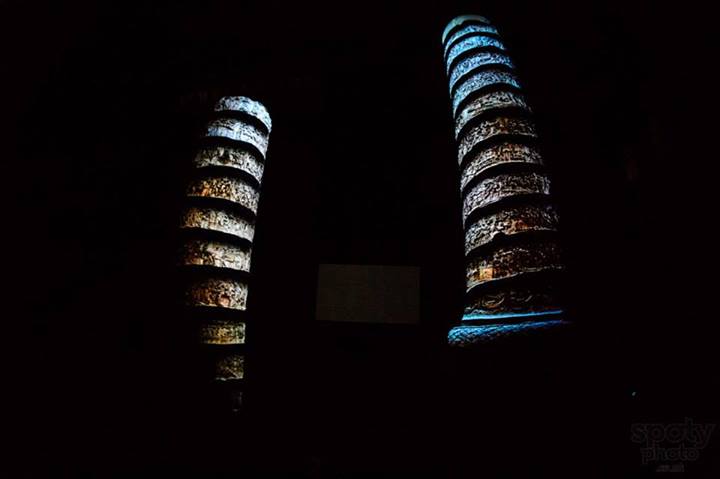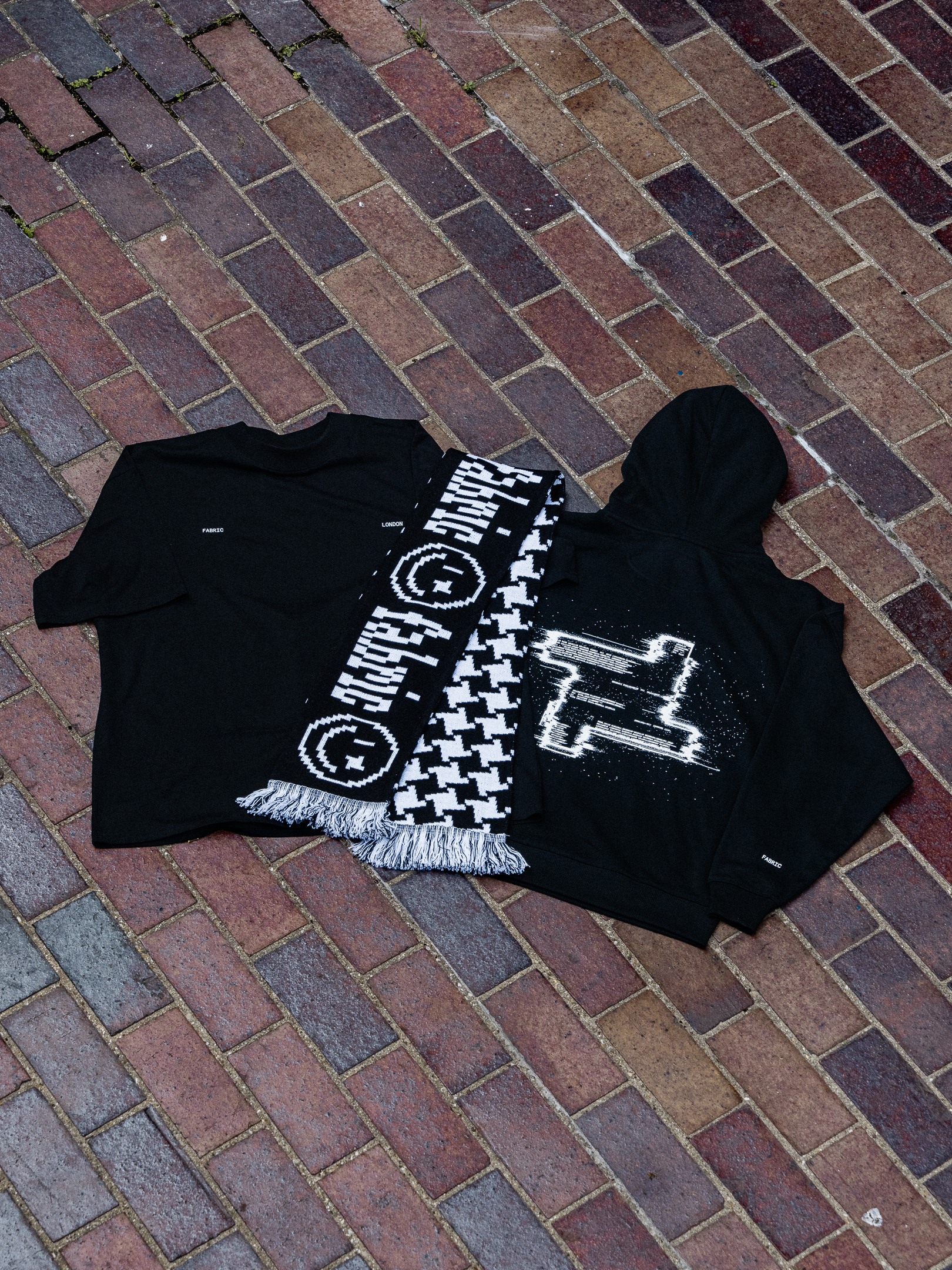In Depth: Introducing The Illusory Visual World Of Dreamrec
After a youth spent absorbing rather distorted projections of the world through VHS recordings (remember tapes guys?) Silviu Visan has been blessed with an obsession for creating alternate realities. It’s something he’s channelled into his own visual aesthetic, one that now regularly appears on club backdrops both internationally and in his home city of Bucharest. Utilising layers of software he creates immersive situations inside party spaces, projection mapping them until partygoers feel like they’ve physically stepped into another dimension. He’s started to earn himself a reputation for being a leader in this particular field too, to the point of being invited by the V&A museum to cloak their internal structures with his own visions of pseudo-reality. For the last two years he has also worked alongside his long time collaborators, RPR Soundystem (he is also responsible the label [a:rpia:r]'s artwork) in their annual Room One takeover so as he prepares to return to Room One to transform our own space and add another facet to the music, we took the opportunity to uncover more of Visan's remarkable capabilities and vision. Where did your interest in visual art come from? – is it something you’ve had from a young age? Dreamrec.: I think so. Most of my childhood was spent around my father’s workroom. He used to design and actually build the toys for the main entertainment park in Bucharest and despite them being far from art pieces, it was really exciting for me to be part of the building process - to see the little dragon themed trains or the colourful houses being built and seeing the other kids trying them for the first time. This was probably the moment when I fell in love with this fantasia facilitating activity - using technology to modify the perception of reality, creating illusory spaces to spend time in. How did you develop your art – did you study academically or was it purely from your own exploration and self-learning? I just had an urge to play and learn without the thought of having an artistic career at any point in the future. Being self-taught became my strength and a limitation at the same time. The sense of art appeared when I’d built confidence in my own instincts; when the results of my digital craft began to behave and feel like the idea that started it. What artists work would you say that you respect? Nature often seems to be the best artist. After that there is this mixture of people from the worlds of fine art, programming, music, film, fashion, science and choreography that blend their work together, re-evaluating the idea that everything has been done before. That’s the work that I’m mostly drawn to today, it’s the mixture of knowledge and instinct, romance and technology. What would you say were the main themes that you explore in your art? There is a huge reference to nature’s patterns, surreal geological forms and other-worldly landscapes in my work. Also, like my Dreamrec. pseudonym suggests, I’m inspired by how the brain uses memory and imagination to trick us into believing that a different layer of reality exists.I try to add subtle subversiveness to the work I make for clubs, abstract computer graphics moving with human motion captured sequences that have a sense of humour or continuous deep landscapes that trick the perception of space. [a:pria:r] at Casino Sinaia , in collaboration with Cote as part of Videogram You’ll be returning to projection map our space again for RPR Soundsystem a collective you have really close ties with – can you tell us a bit about how you came to work with them? My friendship with Rhadoo goes way back, so when they decided to make the label [a:rpia:r] I was right there, to embark on the journey with them. They are very open minded people and I had all their support in working with the promoters to create the video scenography I wanted. fabric’s brick walls are the perfect canvas for me by adding the right raw organic textures to match their music.  What other projects are you working on currently? With the help of a new team member, we are working on a mobile/tablet version of the effect I’m using to generate and process videos in my work. It will allow people, with the use of the built in cameras, to see these natural patterns unfolding around whatever situation they are pointing the mobile device at. The current goal is to try to add enough controllable parameters, to keep the observation interesting and interactive. On my Instagram account I usually post various results from my experiments and projects, even though on a little square image you are missing out on a lot of details from the actual installations shown there.
What other projects are you working on currently? With the help of a new team member, we are working on a mobile/tablet version of the effect I’m using to generate and process videos in my work. It will allow people, with the use of the built in cameras, to see these natural patterns unfolding around whatever situation they are pointing the mobile device at. The current goal is to try to add enough controllable parameters, to keep the observation interesting and interactive. On my Instagram account I usually post various results from my experiments and projects, even though on a little square image you are missing out on a lot of details from the actual installations shown there.
"I’m inspired by how the brain uses memory and imagination to trick us into believing that a different layer of reality exists."How do you go about applying your own work to the music – like how much do you think about how your visual aesthetic should complement their sound? I don’t have a direct, sequenced response to club music. There is more an ambient slowness to my projections, with surprising events happening to create short dialogues with the public. With [a:rpia:r], it’s a game of trust, we appreciate and understand each other’s work, we’ve been playing together for more than 10 years. Working on their vinyl artwork from the beginning has also allowed me to define an ‘[a:rpia:r]’ aesthetic, which I could connect to the visuals as well. As well as RPR and the label [a:rpia:r] you also tour with Rochițe or alongside the Apparatus 22 collective can you tell us a bit about your work for them? Do you deliberately aim for a different visual identity for the different artists that you work with? Rochite is a very special project for me, it’s also some sort of dance music but with a very distinctive approach. I only project symbols and textures on his white mask so we focus on a small surface that is continuously shapeshifting, sometimes even disappearing completely, only to re-emerge from the darkness with a totally different contour. From the spectrum of sounds to the mythology that surrounds the visual part, it is definitely a shift from what we’ll hear on a regular techno night. But I find it liberating to travel through all these soundscapes as I need to always ask myself where I want to go, instead of getting stuck in repetition. Could you give us an insight into the technical process of your visuals how are the images created and generated? Are they programmed to change automatically to the audio or are they manually controlled? I usually end up using various software programs at the same time, where I feed from generative elements that act like live instruments to pre filmed footage and rendered CGI animations. For the last three years I’ve been experimenting so much with video/digital feedback and man ray solarization techniques that it almost feels like an obsession. Because the VHS format was booming during my childhood, I sometimes record digital audio/video improvisation onto tapes, just to look at how the faults and quality of the medium affects the mood of the original work and its clean signal. As well as our club you’ve been involved in some incredible projects, projection mapping the Victoria Albert Museum here in London is just one good example - what potential do you think that projection mapping has? The project at V&A was indeed incredible, having the opportunity to project on the full scale Trajan’s column was a huge challenge. With the support of a great sound design by Catalin (Rochite) we could interpret a historical moment with a new set of tools augmented over the real piece of history. There is a huge potential with this technique for museums to add an extra perspective to the classical works of art. Kids were also fascinated by it and I think this is a good way to capture their attention and engage them into learning new things.
 What other projects are you working on currently? With the help of a new team member, we are working on a mobile/tablet version of the effect I’m using to generate and process videos in my work. It will allow people, with the use of the built in cameras, to see these natural patterns unfolding around whatever situation they are pointing the mobile device at. The current goal is to try to add enough controllable parameters, to keep the observation interesting and interactive. On my Instagram account I usually post various results from my experiments and projects, even though on a little square image you are missing out on a lot of details from the actual installations shown there.
What other projects are you working on currently? With the help of a new team member, we are working on a mobile/tablet version of the effect I’m using to generate and process videos in my work. It will allow people, with the use of the built in cameras, to see these natural patterns unfolding around whatever situation they are pointing the mobile device at. The current goal is to try to add enough controllable parameters, to keep the observation interesting and interactive. On my Instagram account I usually post various results from my experiments and projects, even though on a little square image you are missing out on a lot of details from the actual installations shown there.Tags
No items found.


.jpg)

